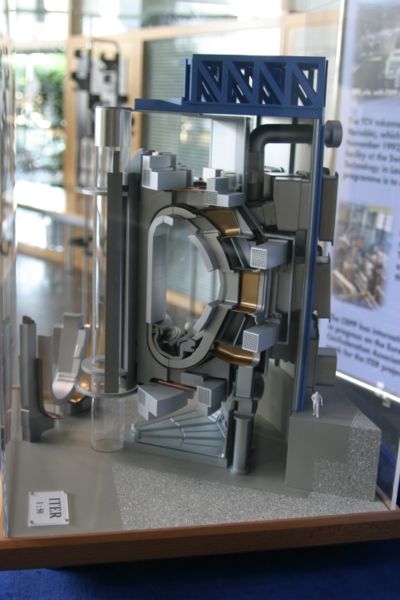ITER and the Future of Fusion
Interview with
Chris - They said size is important, Steve. This certainly is big budget. This is our best bet of trying to make fusion a reality, isn't it?
 Steve - It's going to be a fabulous experiment to be involved in because it's going to produce 500MW of fusion power. When you think that a typical power station is about a gigawatt so about twice that. This is incredible. This is getting to industrial scale of fusion power. It's really showing that we can do it and that we're getting there. It won't produce any electricity but it'll get us right to the very edge of being able to produce electricity with fusion.
Steve - It's going to be a fabulous experiment to be involved in because it's going to produce 500MW of fusion power. When you think that a typical power station is about a gigawatt so about twice that. This is incredible. This is getting to industrial scale of fusion power. It's really showing that we can do it and that we're getting there. It won't produce any electricity but it'll get us right to the very edge of being able to produce electricity with fusion.
Chris - Could you just paint us a picture of what actually is ITER, how will it work and how will you get the energy that the fusion reaction makes out in the future to make things like electricity?
Steve - In the fusion reaction out comes a neutron. ITER will be a great big donut. It's a ring donut shape. It has six metres radius. It will produce fusions in the middle of that ring and they will come out as this neutron. The neutron doesn't get captured by the magnetic field because it doesn't have any charge and so it comes out and it comes into the wall. In an energy producing reactor we have something in the wall called a blanket. In the blanket the neutron hits actually lithium in the blanket. It makes tritium which is the fuel you put back in again and it makes energy which you extract as heat and you drive a normal turbine out of that heat. In the world there's so much lithium and deuterium that we'll be able to run fusion reactors for millions of years.
Chris - Assuming that we can get them working!
Steve - Yes!
Chris - Where actually in France is this happening and what stage of the build are you now at?
Steve - It's being built near Aix-en-Provence so a nice part of France, actually.
Chris - Good wines there.
Steve - Yes, a nice rose. Near Cadarache. It's going to take about ten years to build. During that time JET will continue to operate at Culham and we're hoping to break all our records in the near future - get more fusion power out of JET than we got in the 90s.
- Previous Fusion Power at JET
- Next Fusion Power with Lasers










Comments
Add a comment